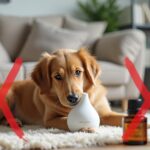You may think that essential oils are just a fad with no scientific backing, but research has shown that these oils can actually be effective in removing warts. While they may not work for everyone, essential oils have been found to have antiviral and antibacterial properties that can help combat the underlying causes of warts. If you're considering alternative treatments for wart removal, essential oils might be worth exploring. But before you start applying them to your skin, it's vital to understand which oils are most effective and how to use them safely – a topic we'll explore in more detail.
Key Takeaways
- Essential oils, such as tea tree, oregano, and lemon oil, can be effective in removing warts due to their antiviral properties.
- Blending essential oils with a carrier oil is crucial to avoid skin irritation, with a recommended 1-3% essential oil concentration.
- Essential oils can stimulate the immune system, helping the body fight off the virus that causes warts, promoting overall well-being.
- Tea tree oil, oregano oil, and frankincense oil are popular choices for wart removal due to their antiviral and anti-inflammatory properties.
- Essential oils offer a natural and non-invasive alternative to conventional wart removal treatments, with minimal side effects and risks.
What Causes Warts to Form
Caused by the human papillomavirus (HPV), warts form when the virus infects the outer layer of your skin.
This infection leads to an overproduction of skin cells, resulting in a thickened, hardened layer of skin that's characteristic of warts. HPV is highly contagious and can be spread through skin-to-skin contact, cuts, or scratches in the skin.
When HPV infects your skin cells, it causes viral mutations that disrupt normal cell function.
These mutations can lead to uncontrolled cell growth, resulting in the formation of a wart. The virus can also remain dormant in your skin for years, only to reactivate and cause new warts to form.
Common areas of the body where warts form include the hands, feet, and face.
People with weakened immune systems are more susceptible to developing warts, as their bodies are less able to fight off the HPV virus.
Understanding the causes of warts is vital in developing effective treatment strategies, including the use of essential oils, which will be discussed later.
It's also important to note that warts can resolve on their own, but they can also persist and cause discomfort and disfigurement.
Essential Oils for Wart Removal
Upon considering treatment options for warts, you may be surprised to learn that essential oils can play a role in their removal. There are various wart types, including common warts, plantar warts, and flat warts, each with distinct characteristics and treatment approaches.
| Essential Oil | Wart Type | Properties |
|---|---|---|
| Tea Tree Oil | Common Warts | Antimicrobial, antiviral, and anti-inflammatory |
| Oregano Oil | Plantar Warts | Antimicrobial, antifungal, and antibacterial |
| Lemon Oil | Flat Warts | Antiviral, antiseptic, and astringent |
When using essential oils for wart removal, it's vital to blend them with a carrier oil to avoid skin irritation. Oil blending is a delicate process, as it requires finding the right ratio of essential to carrier oil. Typically, a 1-3% essential oil concentration is recommended. For example, you can mix 5-10 drops of tea tree oil with 1 teaspoon of coconut oil to create a blend for common wart treatment. Always perform a patch test before applying any new oil blend to confirm you're not allergic to the ingredients.
Benefits of Using Essential Oils
Using essential oils for wart removal has several benefits. Not only are they a natural and non-invasive alternative to conventional treatments, but they also promote overall well-being.
As a form of aromatic therapy, essential oils can help reduce stress and anxiety, which can exacerbate wart growth. By incorporating essential oils into your skincare routine, you can create a holistic approach to wart removal.
In addition to their emotional benefits, essential oils also offer a range of physical advantages. Unlike harsh chemicals, essential oils are gentle on the skin and can help soothe irritation and inflammation.
As a natural remedy, essential oils can also stimulate the immune system, helping your body to fight off the virus that causes warts. Moreover, essential oils are often free from side effects, making them a safer choice for people with sensitive skin.
Most Effective Essential Oils
Several essential oils have proven effective in removing warts, and you can choose from these options to create a personalized treatment plan.
Tea tree oil, known for its antiviral and antifungal properties, is a popular choice for wart removal. Oregano oil, which has antiviral and antibacterial properties, can also be effective in eliminating warts. Frankincense oil, with its anti-inflammatory properties, can help reduce pain and inflammation associated with warts.
You may also consider using lemon oil, which has antiviral and astringent properties, or cypress oil, which has antiviral and anti-inflammatory properties.
When using essential oils for wart removal, blending different oils can enhance their effectiveness. For example, combining tea tree oil with oregano oil can create a potent antiviral blend.
As natural remedies, essential oils offer a safe and non-invasive alternative to traditional treatments. By selecting the most effective essential oils and using them correctly, you can create a personalized treatment plan to help remove warts and promote healthy skin.
Always choose high-quality essential oils and consider oils blending to maximize their therapeutic benefits.
How to Use Essential Oils Safely
How do you guarantee you're using essential oils safely when treating warts, given their potency and potential interactions with the skin?
To safeguard safe use, always dilute essential oils in a carrier oil, as undiluted oils can cause skin irritation or allergic reactions. The general dilution ratio is 1-3% essential oil to 97-99% carrier oil.
When using essential oils for the first time, perform skin sensitivity testing on a small area of skin.
Apply a few drops of the diluted oil to the inner forearm or behind the ear and monitor for any adverse reactions, such as redness, itching, or swelling, for 24-48 hours. If no reaction occurs, you can proceed with using the oil on the affected area.
Essential oil blending is also vital for safe use.
Some oils, like tea tree oil and oregano oil, shouldn't be used together, as they can cause skin irritation. Blending oils with similar properties or characteristics can increase their effectiveness while minimizing potential risks.
Always research and consult with a healthcare professional or certified aromatherapist before using essential oils for wart removal.
Frequently Asked Questions
Can Children Use Essential Oils to Remove Warts Safely?
When tackling wart worries, you'll want to choose kid-friendly remedies, but essential oils may not be the safest option for children, as their skin can be sensitive to certain oils and concentrations.
Do Essential Oils Cause Scarring After Wart Removal?
You'll be left with a crater-like scar, or so it seems. While unlikely, essential oil risks during wart removal may cause scarring, but this is rare; proper application minimizes wart removal scars.
How Long Does It Take for Essential Oils to Work?
When using essential oils for treatment, you'll notice their oily consistency aids in skin penetration. Treatment duration varies, but you can expect results in a few weeks to a few months, depending on individual cases.
Are Essential Oils Effective on Genital Warts?
When treating genital warts, you're dealing with viral transmission, making it vital to weigh natural remedies carefully. Some essential oils, like tea tree oil, show promise in modulating the immune response, but effectiveness varies.
Can Essential Oils Be Used in Combination With Other Treatments?
Can you imagine a treatment plan that amplifies the healing process? You can use essential oils in combination with other treatments, creating synergistic blends that enhance their effectiveness, especially through topical application for ideal results.
Conclusion
You've learned that essential oils can be an effective alternative for removing warts. According to the American Academy of Dermatology, approximately 3 out of 4 people will experience warts at some point in their lives. By harnessing the antiviral and anti-inflammatory properties of essential oils like tea tree oil and oregano oil, you can stimulate your immune system and promote wart removal naturally. Always follow safety guidelines to guarantee a safe and effective treatment experience.






